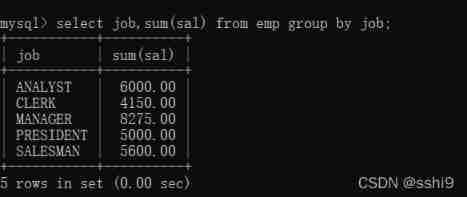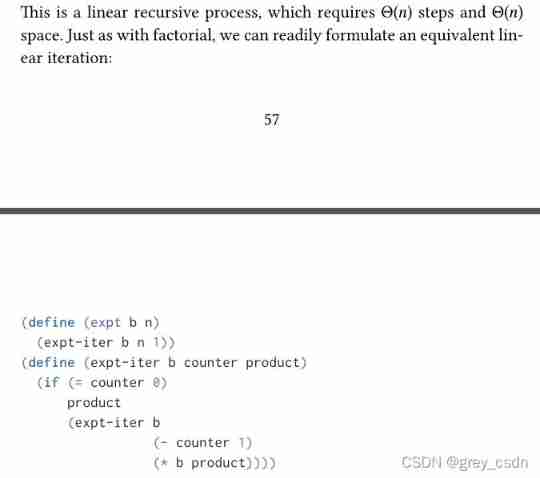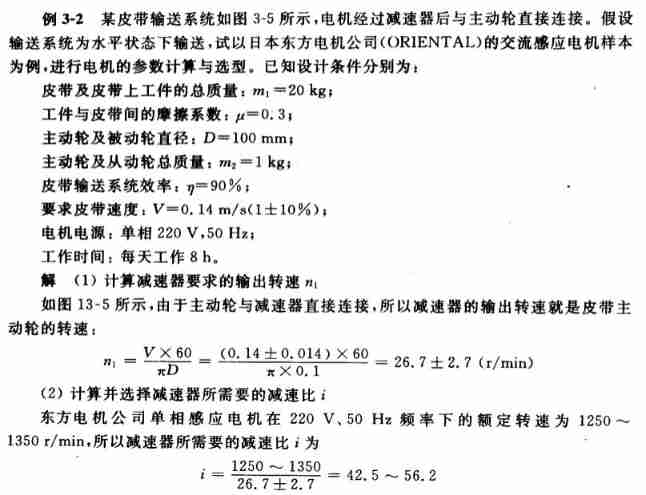当前位置:网站首页>Redis core technology and practice - learning notes (IX): slicing cluster
Redis core technology and practice - learning notes (IX): slicing cluster
2022-07-03 17:51:00 【Tom Kong】
One . Cluster slicing
Cluster slicing , Also called fragment cluster , It means starting multiple Redis Instances form a cluster , Follow the rules , Divide the data received into multiple copies , Each copy is saved with an instance .
Use scenarios , take 25GB The data is saved with Two kinds of schemes :
Cluster slicing , Also called fragment cluster , Namely Refers to starting multiple Redis Instances form a cluster , And then according to certain rules , Divide the received data into multiple copies , Each copy is saved with an instance . Back in the scene we just had , If you put 25GB The data are divided equally into 5 Share ( Of course , You can't even it ), Use 5 An instance to save , Each instance only needs to be saved 5GB data . As shown in the figure below :

Multi instance save data slice , It can be saved 25GB Data can avoid fork The child process blocks the main thread, causing the response to slow down .
Two . How to save more data ?
Purpose : Save a lot of data
Method : expand Redis Instance memory ( Vertical expansion scale up) And slice clusters ( Horizontal scaling scale out) The two methods .
- Vertical expansion : Upgrade single Redis Instance resource allocation , Include increase Memory Capacity , increase disk Capacity , Use a higher configuration of CUP.
- Horizontal scaling : Horizontal increase At present Redis Number of instances .
Vertical expansion
- advantage : Simple , direct
- shortcoming :
- One . Use RDB When data is persisted , If the amount of data increases , It will also increase the memory , The main thread fork Child processes will block . If persistence is not required Redis data , Then vertical expansion is also a good choice .
- Two . Hardware cost limitation .
Horizontal expansion is a more scalable solution , Just add Redis The number of instances , Don't worry about the hardware and cost limitations of a single instance , For millions , Tens of millions of users , Horizontal scaling Redis Slicing clusters would be a good choice .
The corresponding distribution relationship between data slice and instance
Slice clustering is a general mechanism for storing large amounts of data , This mechanism can have different implementation schemes .
Redis 3.0 Later, it will be officially provided Redis cluster programme , For slicing clusters .
Redis Cluster The scheme adopts Hash slot (Hash Slot) To deal with it Data and examples Mapping between . A slice cluster has 16384 Hash slot , These hash slots are similar to data partitions , Each key value pair will be based on its key Map to a hash slot .
- First of all, according to the key value pair key, according to CRC16 Algorithm Calculate a 16bit Value ; Then use this 16bit It's worth it 16384 modulus , obtain 0~16384 Modulus in range , Each module represents a corresponding numbered Hashi trough .
- How hash slots are mapped to specific Redis example : If it's not Redis Cluster Scenario time , have access to cluster create Command create cluster , here Redis These slots are automatically evenly distributed on cluster instances . If there is N An example , However, the number of slots on each instance is 16384/N individual .
We can use cluster meet Command to manually establish a connection between instances , Forming clusters , In the use of cluster addslots command , Specify the number of hash slots on each instance .
Different in the cluster Redis The memory size of the instance is configured differently , If you divide the Hashi trough equally on each instance , When saving the same number of key value pairs , Compared with instances with large memory , The memory capacity of the instance will be smaller . At this time, you can configure resources according to different instances , Use cluster addslots Command to manually allocate hash slots .

The slice cluster has a total of 3 An example , Colleagues assume that 5 Hash slot , The Hashi slot can be manually assigned by the following command :
example 1 Save Hashi slot 0 and 1, example 2 Save Hashi slot 2 and 3, example 3 Save Hashi slot 4.
redis-cli -h 127.0.0.1 –p 6379 cluster addslots 0,1
redis-cli -h 127.0.0.1 –p 6380 cluster addslots 2,3
redis-cli -h 127.0.0.1 –p 6381 cluster addslots 4When manually allocating hash slots , Need to put 16384 All the slots are allocated , otherwise Redis The cluster is not working properly .
How the client locates the data ?
When locating key value pair data , The hash slot in which he is located can be calculated , This calculation is in When the client sends a request . however , To further navigate to the instance , You also need to know which instance the hash slots are distributed on .
- After the connection between the client and the cluster instance is established , example The allocation information of the hash slot will be sent to the client .
- When the cluster was first established , Each cluster only knows which hash slots are allocated to it , Do not know the hash slot information corresponding to other instances .
- Redis The instance will send its own hash slot information to other instances connected to it , To complete the hash slot allocation information diffusion . When instances are connected to each other , All instances know the mapping relationship of all hash slots . When the client accesses any instance , Can get all the hash slot information .
- After the client receives the hash slot information , Will be able to The hash slot information is cached locally , When a client requests a key value pair , The hash value of the key will be calculated first , In this way, you can send a request directly to the corresponding instance .
Redis Need to reallocate the Hashi trough
Clients cannot pass messages to each other , Get the latest hash slot allocation information , But the client cannot actively perceive .
What if the cached allocation information is inconsistent with the latest allocation information ?
Redirect
The client sends data read / write operations to an instance , There is no corresponding data on the instance , The client needs to send operation commands to a new instance .
When the client sends an operation request of a key value pair to an instance , If this instance does not have a hash slot mapped by this key value pair , Then this instance will return to the client move command In response to the results , This result includes the access address of the new instance .
GET hello:key
(error) MOVED 13320 172.16.19.5:6379MOVED The command says , The hash slot where the key value pair requested by the client is located 13320, It's actually in 172.16.19.5 For instance .
- MOVE How to use the redirect command :
- Because of load balancing ,slot2 The data in has been removed from the instance 2 Migrate to instance 3
- The client cache still records slot2 In the instance 2 Information about , So I'll give you an example 2 dispatch orders .
- example 2 Return a message to the client move command , hold slot2 The latest location of ( example 3), Return to the client .
- The client will send a message to the instance again 3 Send a request , It also updates the local cache , hold slot2 The correspondence with the instance is updated .
Slot 2 All the data in has been migrated to the instance 3 Only in this case move
ASK
If slot2 There is too much data in the , Customer to instance 2 When sending a request , here slot2 Only part of the data in is migrated to the instance 3, There is still some data not migrated . When this migration is partially completed , The client will receive a message ASK Error message .
GET hello:key
(error) ASK 13320 172.16.19.5:6379- In this result ASK An order means client The hash slot corresponding to the request key value pair 13320, In the instance 3 On , However, the hash slot is being migrated to the instance 3.
- At this time, the client needs to give the instance 3 Send a ASKING command : Let this instance allow the client to execute the following commands .
- The client is sending... To this instance GET command , To read this data .
Example :
- slot2 From instance 2 To instance 3 transfer ,key1 and key2 It's been moved in the past ,key3 and key4 It's still an example 2 in .
- Client to instance 2 request key2 after , You will receive an instance 2 Back to ASK command .
- ASK The two meanings of the command :
- Express slot Data is still migrating .
- ASK The command returns the latest instance address of the data requested by the client to the client
- The client needs to give the instance 3 send out ASKING command , And then send the operation command .
ASK The command does not update the hash slot allocation information of the client cache .
If the client requests again Slot 2 Data in , It still gives examples 2 Send a request . That means ,ASK The purpose of the command is to enable the client to send a request to the new instance , Not like MOVED Order that , Changes the local cache , Let all subsequent commands be sent to the new instance .
After class questions :
Redis Cluster The scheme allocates key value pairs to different instances through hash slot , This process requires key value pairs key Conduct CRC Calculation , Then map with the hash slot , What are the benefits of doing so ? If you directly use a hash table to record the corresponding relationship between key value pairs and instances , When you use it like this, you can look it up directly , Why not ?
- The storage capacity of the whole cluster key Too many , Record each key The mapping table with the instance will be very large , Both the storage server and the client occupy a very large memory space .
- Redis cluster Adopt a decentralized model , The client accesses a key, If this key Not on this node , This node needs to have the ability to correct the client routing to the right node (move Respond to ).
- Routing tables need to be exchanged between nodes , Each stage has a complete routing relationship , If the storage is key Mapping table with instance , Then the exchange of information between nodes will become huge , Consume network resources , At the same time, memory takes up a lot of resources .
- The cluster expansion , Shrinkage capacity , When data is balanced , Data migration occurs between nodes , During migration, you need to modify each key The mapping relation of , Maintenance costs are high .
- Add a hash slot in the middle , The relationship between data and nodes can be decoupled ,key adopt hash The calculation only requires which Hashi slot the relationship is mapped to , Then find the node through the mapping table between the hash slot and the node , It's equivalent to consuming very little cpu resources , Let the data be evenly distributed , Make the mapping table smaller , It is helpful for the client and server to save , Exchanging information between nodes is lighter .
- When the cluster is expanding 、 Shrinkage capacity 、 When data is balanced , Operations between nodes, such as data migration , All operations are based on Hash slots , Simplify node expansion 、 The difficulty of volume reduction , Easy to maintain and manage the cluster .
边栏推荐
- Graduation summary
- List的stream中Long对象与long判等问题记录
- Research on Swift
- The difference between i++ and ++i: tell their differences easily
- Five problems of database operation in commodity supermarket system
- Global and Chinese health care OEM and ODM market status survey and investment planning recommendations report 2022-2028
- vs2013已阻止安装程序,需安装IE10
- WebView module manages the application window interface to realize the logical control and management operation of multiple windows (Part 1)
- Keepalived setting does not preempt resources
- Market demand survey and marketing strategy analysis report of global and Chinese pet milk substitutes 2022-2028
猜你喜欢

How to deploy applications on kubernetes cluster

TensorBoard快速入门(Pytorch使用TensorBoard)

MySQL grouping query

IntelliJ 2021.3 short command line when running applications

1146_ SiCp learning notes_ exponentiation

Automata and automatic line of non-standard design

Global and Chinese pediatric palliative care drug market development research and investment planning recommendations report 2022-2028

Market demand survey and marketing strategy analysis report of global and Chinese pet milk substitutes 2022-2028

Getting started with deops

鸿蒙第三次培训
随机推荐
1147_ Makefile learning_ Target files and dependent files in makefile
win32:堆破坏的dump文件分析
聊聊支付流程的设计与实现逻辑
VM11289 WAService. js:2 Do not have __ e handler in component:
Stm32h7 Hal library SPI DMA transmission has been in busy solution
鸿蒙第四次培训
WebView module manages the application window interface to realize the logical control and management operation of multiple windows (Part 1)
Website with JS doesn't work in IE9 until the Developer Tools is activated
Kotlin的协程:上下文
Internet Hospital his Management Platform source, online Inquiry, appointment Registration Smart Hospital Small program source
Comparison of kotlin collaboration + retro build network request schemes
ArrayList analysis 3: delete elements
IntelliJ 2021.3 short command line when running applications
supervisor监控Gearman任务
STM32实现74HC595控制
Postfix tips and troubleshooting commands
Deops入门
聊聊支付流程的設計與實現邏輯
数学公式(测试)
国内如何购买Google Colab会员